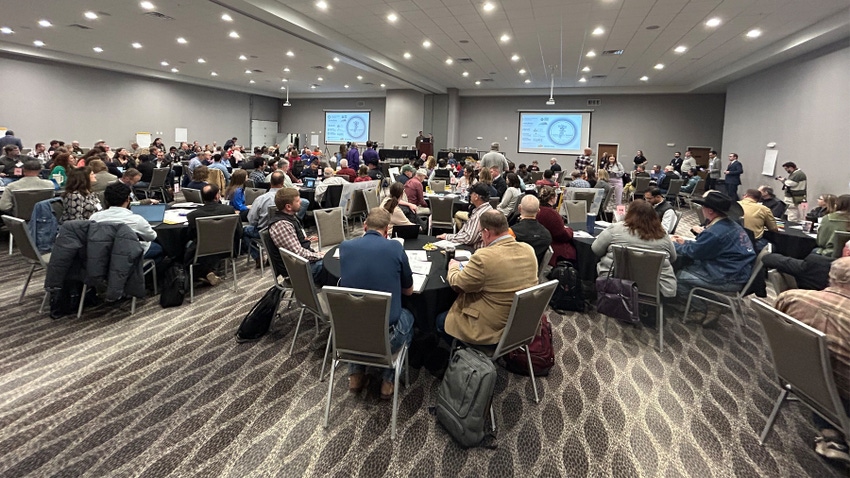
“Change is not necessary because survival is not mandatory.”
Those words from a participant at the 2024 Ogallala Aquifer Summit gave me pause. The speaker was discussing the management of the Ogallala Aquifer and the survival of the farms, ranches and communities relying on it.
And if there was one overarching theme to come out of the summit, it was that folks agree changes need to happen to ensure that the aquifer is around for future generations.
What those changes may be and how they’re implemented? That’s the messy elephant in the room.
This was the third Ogallala Aquifer Summit. Held every three years, it brings together stakeholders from all segments of the communities who use the aquifer.
The Ogallala lies under six states and is the lifeblood of the Great Plains, supporting municipalities, business and industry, and agriculture. There’s a lot riding on making sure we conserve it.
Nathan Hendricks, K-State professor of agricultural economics and policy, says the total added value of just the land above the Ogallala in Kansas alone, due to the ability to irrigate, is $3.5 billion.
If the aquifer continues on the path of depletion, by 2050, Kansas could lose up to $33 million per year in the value of returns to the land. Texas could lose upward of $56 million per year in returns to the land. And the effect, Hendricks says, accelerates as the aquifer gets more depleted.
But the situation is much more complex and interwoven between agriculture and the communities that call the Ogallala home than just land values. Farmers raise the irrigated crops that are fed to the cattle in the feedlots and dairies, which supply food for our nation and our export partners. We have beef-packing plants and dairy businesses that rely on that steady production to keep their employees employed.
Crop-input suppliers, equipment dealers, bankers and crop insurance companies rely on farmers’ ability to raise a crop with reliable irrigation to pay their bills. Municipalities not only need water for drinking, but they also need the jobs and economic development from businesses that are tied to the water.
And just so you can sleep tonight, I’m not going to dive into the national security implications of losing the food production capabilities over the Ogallala. That’s another column.
Further complicating this is the fact that no one single entity controls the Ogallala or makes any rules and regulations about how it�’s allocated. Each state has its own groundwater rules and regulations.
Farmers all make individual decisions on how they’ll pump the water, how much they’ll pump it and when they’ll pump it as it fits into their production plans. And you’re likely to set off a powder keg of emotions if you suggest otherwise.
So, to recap, the problem is complex, with many stakeholders and their competing and complementary interests, and it’s under six different states with the political ramifications that entails.
Can we blame previous generations for just ignoring the Ogallala in the corner until now? I can’t.
But we can’t go on with the status quo and the bare-minimum effort anymore. That’s what I heard from the stakeholders in the summit those two days.
It’s going to require change — messy change in some places — to address the challenge.
There will be hard conversations in the future. Do we continue to raise the same crops in the same fashion? Do we change the feedstuffs we’re feeding feedlot and dairy cattle? Do we incentivize this method or penalize that lack of change?
Is it something that the market will sort out, or will it require legislative intervention? At what point is local control still a viable option if the situation continues to decline?
Hard conversations to be sure.
If there was ever a perfect time to do it, it would be now, says Jimmy Emmons, a farmer from northwest Oklahoma and the senior vice president of Climate-Smart Programs for Trust in Food.
He says today, unlike 10 years ago or more, there’s research dollars, community support, sound science and federal dollars from the Inflation Reduction Act of 2022 to put toward viable, locally led solutions. We may not get another time like the present, he warned.
So, friends, if there was ever a time to address the elephant in the room, now would be it.
About the Author(s)
You May Also Like






